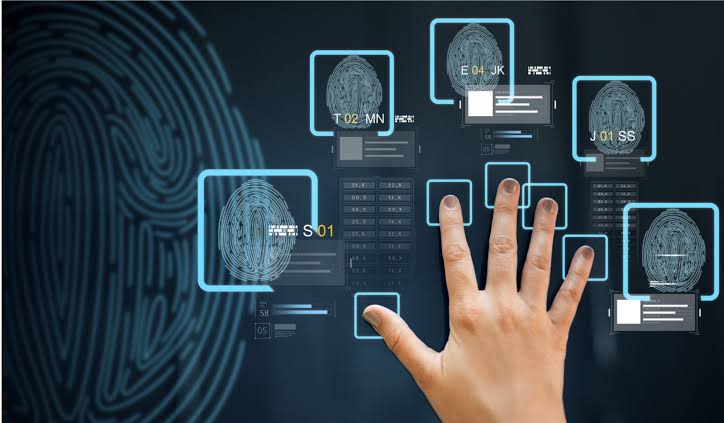In today’s digital era, identity verification has become one of the most critical aspects of security. As cyber threats, fraud, and identity theft increase globally, traditional methods such as passwords, PINs, and ID cards are no longer sufficient. Biometric technology has emerged as a stronger, more reliable solution to verify identities by relying on unique physical or behavioral characteristics. This innovation has transformed industries ranging from banking and healthcare to travel and government systems. By 2025, biometrics are now integrated into everyday applications, making identity verification faster, more secure, and more convenient.
Understanding Biometric Technology
Biometric technology uses measurable human traits for authentication and verification. Unlike passwords or tokens, biometric identifiers are unique to each person and difficult to replicate or steal. The two primary categories of biometrics include physical and behavioral features.
- Physical biometrics: fingerprints, facial recognition, iris scans, voice patterns, palm veins, and DNA.
- Behavioral biometrics: keystroke dynamics, walking patterns, and digital interaction behaviors.
These identifiers are stored in secure databases and matched against live input when an individual attempts to verify their identity.
Why Biometrics Improve Security
Biometrics enhance identity verification primarily because they are tied directly to an individual’s biological or behavioral features, which are harder to forge than traditional credentials.
- Reduced fraud: Unlike passwords that can be shared or hacked, biometrics provide unique personal markers.
- Higher accuracy: Advanced recognition systems achieve near-perfect accuracy levels, reducing false positives and negatives.
- Difficulty of duplication: Physical traits such as iris or vein patterns are extremely complex to replicate.
- Multi-factor authentication: Biometrics are often combined with other methods for layered security.
This makes biometric technology an essential tool in combating cybercrime and fraud.
Speed and Convenience in Verification
One of the most notable benefits of biometric systems is how they streamline verification processes. Instead of remembering multiple passwords or carrying physical tokens, users simply use their biometric traits.
- Mobile devices now use fingerprint and facial recognition to unlock screens within seconds.
- Airports adopt biometric kiosks for faster passenger boarding and immigration clearance.
- Banking apps integrate biometric logins to eliminate the need for complex passwords.
This balance of security and convenience makes biometric adoption appealing across industries.
Role of Artificial Intelligence in Biometric Systems
Artificial intelligence has significantly improved biometric accuracy and reliability. AI algorithms analyze and learn from millions of biometric data points, making recognition systems smarter over time.
- Facial recognition powered by AI can detect individuals even in poor lighting or with facial changes.
- AI-driven fingerprint scanners enhance matching accuracy despite partial or unclear prints.
- Continuous authentication uses AI to monitor ongoing behavioral patterns like typing or mouse movement.
The integration of AI ensures that biometric verification becomes more adaptive and resilient to fraud attempts.
Biometric Technology in Key Sectors
The use of biometrics for identity verification has spread across multiple industries due to its effectiveness.
- Banking and finance: Biometric logins prevent unauthorized access to accounts and transactions.
- Healthcare: Patient identification ensures the right care is provided while protecting sensitive data.
- Government services: National ID programs use biometrics to authenticate citizens and prevent identity duplication.
- Travel and immigration: Airports adopt biometric passports and e-gates to speed up processing.
- Workplace security: Biometric access controls prevent unauthorized entry into sensitive areas.
This widespread application highlights its critical role in modern identity management.
Challenges and Concerns in Biometric Use
Despite its advantages, biometric technology faces several challenges that must be addressed.
- Privacy issues: Storing sensitive biometric data raises concerns about misuse or surveillance.
- Data breaches: If biometric databases are hacked, the stolen data cannot be changed like passwords.
- Accessibility: Not all biometric systems work equally well for all demographics, such as elderly individuals or people with disabilities.
- Ethical considerations: Overuse of facial recognition in public spaces may lead to debates about personal freedoms.
Solving these concerns requires stronger regulations, encryption technologies, and responsible use of biometrics.
Future Advancements in Biometrics
As technology continues to evolve, the future of biometrics promises even more advanced verification methods.
- Multimodal biometrics: Combining fingerprints, facial recognition, and voice for enhanced accuracy.
- Contactless verification: Touch-free systems such as iris or facial scans to improve hygiene and efficiency.
- Wearable devices: Smartwatches and biometric wearables monitoring continuous authentication.
- Blockchain integration: Decentralized biometric storage to enhance data security.
These innovations will make biometric systems more reliable, accessible, and widely adopted across global industries.
Conclusion
Biometric technology has revolutionized identity verification by providing secure, fast, and convenient solutions. With features unique to every individual, biometrics drastically reduce the risk of fraud and unauthorized access. Supported by AI and advanced sensors, these systems are now widely used in banking, healthcare, government services, and travel. While privacy and ethical concerns remain challenges, ongoing advancements and regulations will make biometric verification more secure and trusted in the future. As society moves toward a more digital and interconnected world, biometrics will continue to be the cornerstone of identity verification.



